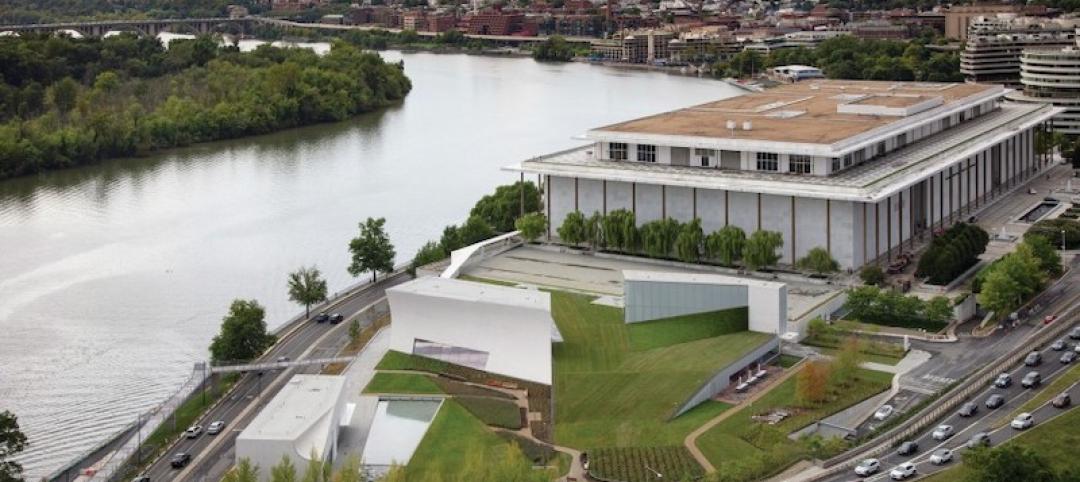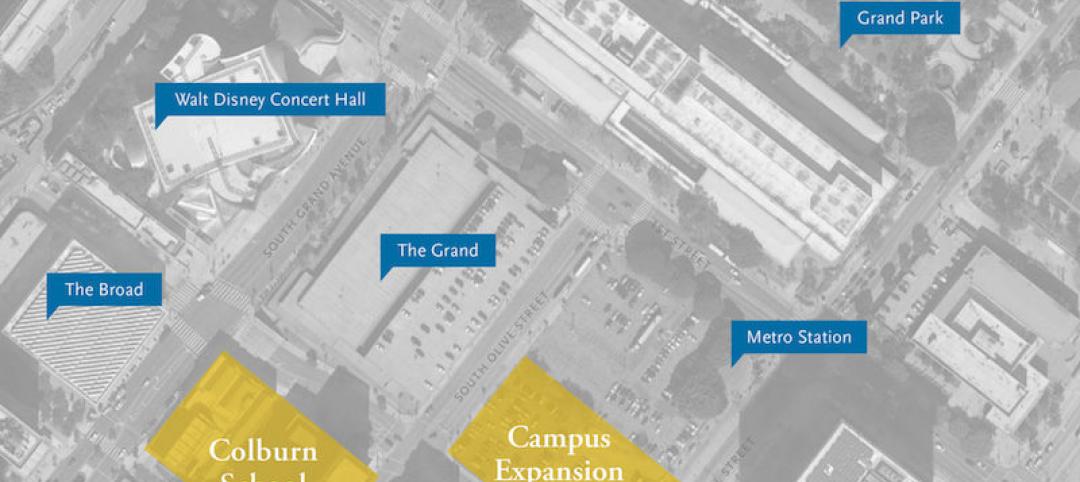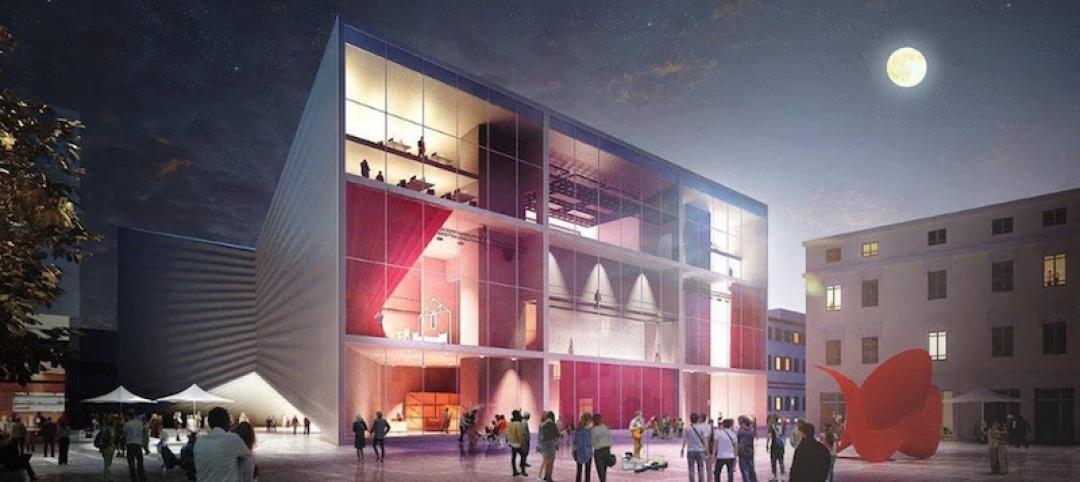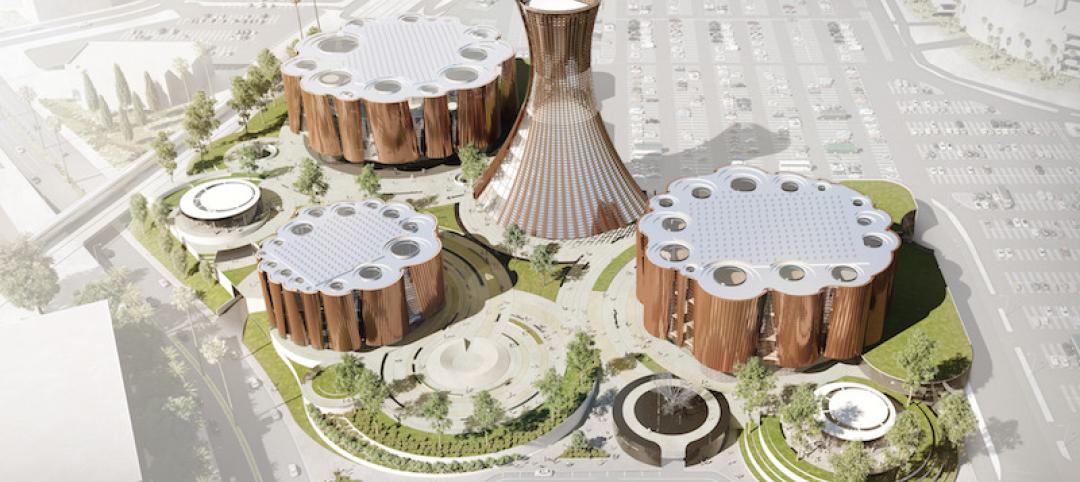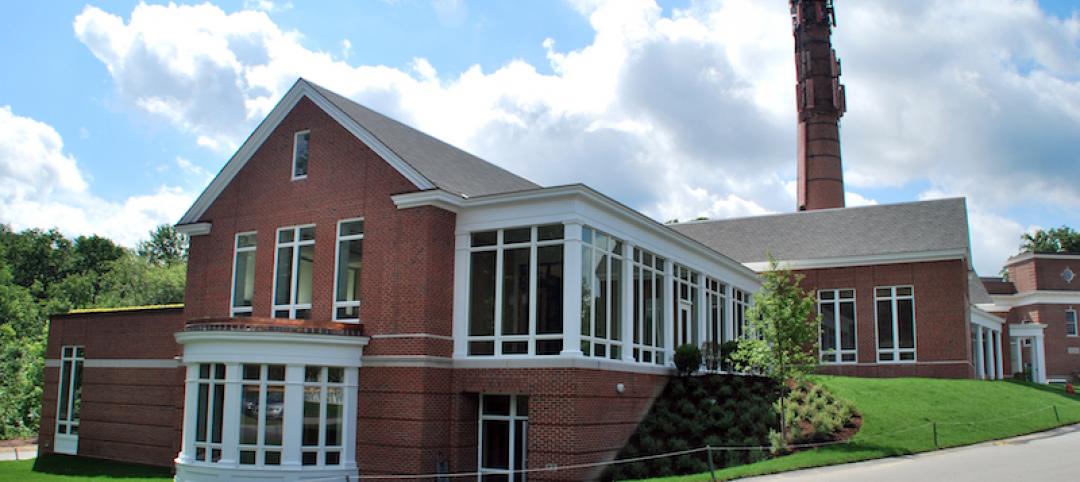The final public element for the rebuilding of the World Trade Center complex in New York City is a performing arts center that’s expected to open next September. That month will also mark the one-year anniversary of the opening of an adaptive reuse which converted what once was a greenhouse in Tarrytown, N.Y., into a flexible, 8,000-sf performance and rehearsal space, artists’ gallery and studio.
The architecture firm REX, working in collaboration with executive architect Davis Brody Bond, theater consultant Charcoalblue, and Threshold Acoustics, designed the eight-story, 138-foot-tall Perelman Performing Arts Center, located in lower Manhattan. The 129,000-sf cube-shaped PAC will provide new spaces for theater, dance, music, chamber opera, film, and media events.
Its three theaters—the John A. Zuccotti Theater, that can accommodate 450 seats; the Mike Nichols Theater, with a 250-seat capacity; and the Doris Duke Theater, which can have up to 99 seats—can be adjusted or combined into 10 different configurations.


The PAC will be adjacent to the World Trade Center Oculus and Transportation Hub. Because it is being built over an existing subway and rail complex, the project’s structural engineer Magnusson Klemencic Associates devised a system that would support that building’s mass, consisting of seven mega columns through the existing infrastructure that hold aloft a belt-truss structure within which the PAC’s auditoria “float.”
The building’s exterior is wrapped with nearly 5,000 5x3-ft marble panels from Portugal, each weighing 295 lbs. (Front is the façade consultant.) Inside, the PAC is organized into three levels: a public level accessible by grand staircase or elevator that encompasses the lobby concourse and stage; an “artists” level with dressing rooms, green rooms, and wardrobe areas; and a “play” level for the three theaters and rehearsal space.

Rockwell Group designed the building’s lobby and restaurant concept restaurant. The project’s estimated cost is $500 million. Its building team includes Sciame (CM), ARUP (circulation consultant), Atelier Ten (sustainability consultant), and Wilson Ihrig (noise and vibration consultant)
From greenhouse to green performing arts center

Pocantico Center, the 216-acre former Rockefeller family estate in Tarrytown, housed John D. Rockefeller’s historic Orangerie, an orange tree greenhouse with 26-ft-high ceilings, that was opened in 1906.
The Orangerie had long been dormant when the Rockefeller Brothers Fund hired the architecture firm FXCollaborative to rehabilitate the building into a multidisciplinary arts center that would also be a model for sustainable design, and inclusion.
This adaptive reuse, now called the David Rockefeller Creative Arts Center, “is rooted in supporting the creative process across artistic disciplines,” said Brandon Massey, AIA, LEED GA, Senior Associate at FXCollaborative, in a prepared statement. This renovation, at a cost of $26 million, was completed within the guidelines of the National Trust for Historic Preservation. (Li Salzman Architects was the project’s historic preservation consultant.)


The reno added concrete slab flooring and sectioned off different areas of the building’s interior for specific performance or installation spaces. The building team added stage and rehearsal studios that can pivot 90 degrees. Also added were 40-ft-wide doors in the back of the building.
The design and construction aspired the building to achieve net-zero energy performance and LEED Platinum certification. The building’s green features include energy efficient windows, solar panels, and rainwater recapture.

The building team on this project included York Construction Corp (CM), Silman Structural Engineers (SE), Langan Engineering (CE), Altieri Sebor Wieber (MEP/FP), and Envoie Projects (owner’s rep.).
Related Stories
Cultural Facilities | Sep 11, 2019
The Kennedy Center expands for the first time since its 1971 debut
The REACH, with three pavilions on a generous lawn, adds openness and light to this performance space.
Performing Arts Centers | Jan 31, 2019
The Glorya Kaufman Performing Arts Center begins construction
AUX Architecture designed the building.
Performing Arts Centers | Jan 24, 2019
This is the first performance complex in Asia devoted to pop music
Reiser + Umemoto designed the facility.
Performing Arts Centers | Aug 21, 2018
The Raymond F. Kravis Center for the Performing Arts receives $50 million expansion
Leo A Daly designed the expansion.
Performing Arts Centers | Mar 23, 2018
Frank Gehry selected to design Colburn School Expansion
The expansion will add three performance venues to the downtown L.A. campus.
Performing Arts Centers | Mar 15, 2018
BIG designs bow tie-shaped building for the National Theatre of Albania
The project is a 3-in-1 cultural venue in downtown Tirana.
Performing Arts Centers | Feb 20, 2018
Citrus trees inspired the design of this half-billion-dollar performing arts center
SPF:architects designed the complex.
Performing Arts Centers | Sep 11, 2017
19th century smokestack highlights a Massachusetts performing arts facility
CBT Architects and Windover Construction collaborated on the adaptive reuse project for Middlesex School.
Performing Arts Centers | Jun 30, 2017
L.A.’s John Anson Ford Amphitheater might finally be ready for its close-up
The performing arts venue, nearly a century old, has undergone an extensive refurbishing.
Performing Arts Centers | May 8, 2017
The performing arts center of the future
For more than 15 years, LPA has completed many projects for the East Central Independent School District (ECISD), and the Performing Arts Center is just one example of how a research-based, collaborative process can improve outcomes.



